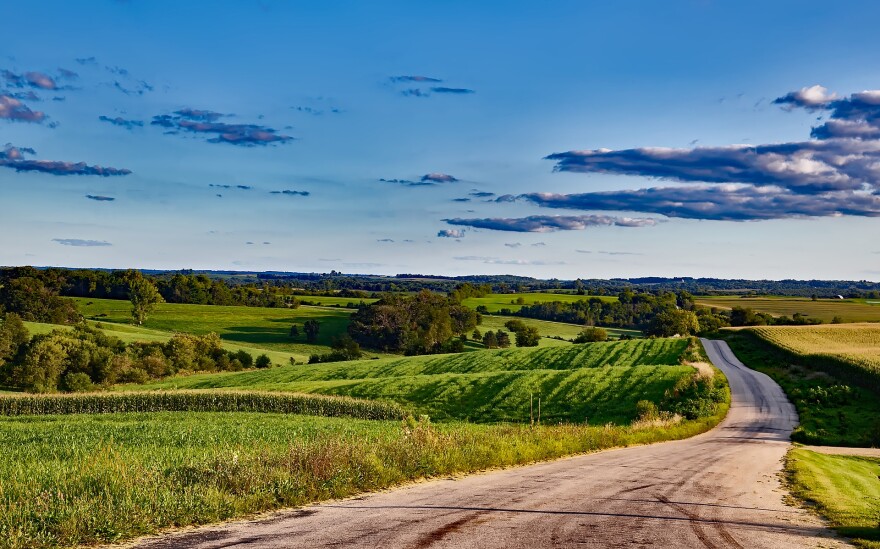In recent days, a report titled “Conserving and Restoring America the Beautiful” was released in response to one of President Biden’s first Executive Orders. The Masked Biologist pulls this report apart and shares some highlights in this week’s Wildlife Matters.
Conserving and Restoring America the Beautiful is a brief but important document. It is a preliminary report to the National Climate Task Force from the US Departments of the Interior, Agriculture, Commerce, and the Council on Environmental Quality. This report was triggered by Executive Order 14008 titled Tackling the Climate Crisis at Home and Abroad, signed January 27, 2021 to kick off a government-wide endeavor prioritizing clean energy, economic recovery and job creation while attempting to turn the tide of climate change.
This is a very brief report, only 24 pages including endnotes. However, there is a lot of content. I thought I would call attention to the highlights most pertinent to us here in the Northwoods. A phrase that you likely will hear again is “30x30,” an ambitious goal established by President Biden calling for conserving at least 30 precent of our nation’s lands and waters by 2030. This goal was developed to address three significant threats to our wildlife, lands, and waters.
Climate change is the primary identified factor feeding our nature crisis. I routinely hear that global warming can’t be true, especially on cold days. Our climate is changing, faster than ever before, and nature cannot keep up. Some of the documented impacts around us include wild weather swings, precipitation falling with decreased frequency but higher intensity, increase of numbers and amounts of invasive species and loss of habitat for less adaptable species.
The disappearance of nature, characterized by increased numbers of threatened, endangered and extinct species. In the US, approximately 12,000 wildlife species need conservation assistance to avoid the threat of extinction according to this report. Certainly in the last two years or so you have heard about the disappearance of pollinators and the fact that we have three billion fewer bids than we did when I was born 50 years ago. Roughly half of all river and stream corridors and wetlands have been cleared, drained, or channelized across the country. Historic farmlands and ranchlands have been taken out of production and converted to different uses. Every time I travel downstate, I see more and more areas that I knew as farmfields and pastures in my childhood that are now subdivisions. When you lose cropfields, fencerows, waterways and pastures, you lose insects and marginal habitats that benefit a variety of birds and animals.
Inequitable access to the outdoors is the third point identified in the President’s executive order and consequently this report. We do not see this up here in the Northwoods, do we? Frankly, we don’t worry about—we probably don’t even think about—how to access clean water, clean air, and immersion in nature. But what if I told you that children, that people, in inner city Milwaukee often go their entire life without walking barefoot in a lawn? Most of our state’s urban areas have very limited access to green spaces, relying on public park infrastructure to provide grass and trees. Low-income communities and communities of color have disproportionately less access to nature’s benefits while simultaneously suffering the costs of losses of nature to development, more pollution, and less hunting and fishing opportunities. I remember as a child going to my great-granny’s house on 40th street in Milwaukee. She did have a small backyard with a little bit of lawn that I would mow with an antique nonmotorized horizontal reel push mower. Some of the neighbors did not have grass at all, and would look at granny’s yard with envy, but we were not allowed to have them over. For fun we could either go play in the concrete back alley with the neighborhood kids or we could walk a couple of blocks to the creek, which was a concrete lined channelized stream/storm sewer. There was a foot bridge over it, and we would have leaf races—drop leaves on the upstream side, then run to the other side and see which leaf hit the old tire or shopping cart first. This was only temporary for me, as we would return home to rural Waukesha county where we lived on a farm along the banks of the Fox River and the woods and fields seemed endless. Up here, where much of Wisconsin and the Midwest comes to vacation, we probably don’t think much about the lack of access to nature for children in Milwaukee. But I remember a friend bringing his family up to visit, and while we were sitting out by the fire, we saw a chipmunk…and the kids went wild! If we can’t bring them to nature up here, we can at least support a program to restore nature where possible within a few minutes’ drive down there.
The report continues with eight principles upon which this 30x30 plan is based, and how it will be measured and reported. I plan to boil those principles down in a future episode, they are ambitious but achievable, and will require sacrifice—as all things worth having do.








